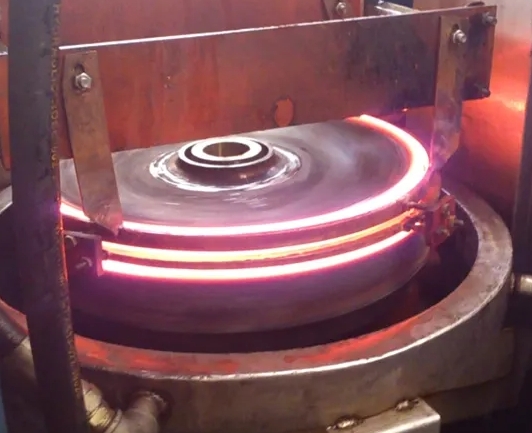- 21
- Jul
Rezumatul a zece metode comune de călire ale mașinii de călire de înaltă frecvență (1)
Rezumatul a zece metode comune de stingere a mașină de stins de înaltă frecvență (1)
1. Single medium (water, oil, air) quenching
Single medium (water, oil, air) quenching: Quenching the workpiece that has been heated to the quenching temperature into a quenching medium to cool it completely. This is a simpler quenching method and is often used for carbon and alloy steel workpieces with simple shapes. The quenching medium is selected according to the heat transfer coefficient, hardenability, size and shape of the parts.
2. Călire medie dublă
Dual-medium quenching: The workpiece heated to the quenching temperature is first cooled to the Ms point in the quenching medium of a high-frequency heating machine with strong cooling capacity, and then transferred to the slow-cooling quenching medium to cool to room temperature to achieve different quenching cooling temperatures range, and has an ideal quenching cooling rate. It is used for complex shapes or large workpieces made of high carbon steel and alloy steel, and carbon tool steel is also mostly used in this method. Commonly used cooling media are water-oil, water-nitrate, water-air, oil-air. Generally, water is used as a quick-cooling quenching medium, oil or air is used as a slow-cooling quenching medium, and air is less used.
3. Martensite graded quenching
Călire cu grad martensitic: oțelul este austenitizat și apoi scufundat într-un mediu lichid (baie de sare sau baie alcalină) cu o temperatură puțin mai mare sau mai mică decât punctul superior Martens al oțelului, păstrat pentru un timp adecvat, iar interiorul și exteriorul părți din oțel sunt tratate. După ce stratul ajunge la temperatura medie, este scos pentru răcire cu aer, iar austenita suprarăcită este transformată încet într-un proces de stingere a martensitei. În general, este utilizat pentru piese mici de prelucrat cu forme complexe și cerințe stricte de deformare, iar uneltele și matrițele din oțel de mare viteză și oțel aliat sunt, de asemenea, stinse prin această metodă.
4. Martensite graded quenching method below Ms point
Martensitic graded quenching method below Ms point: When the bath temperature is lower than the Ms of the workpiece steel and higher than Mf, the workpiece cools faster in the bath, and the same result as the graded quenching can be obtained when the size is larger. Commonly used for larger size low hardenability steel workpieces.
5. Bainite isothermal quenching method
Bainite isothermal quenching method: The workpiece is quenched into a bath with the lower bainite temperature of the steel at an isothermal temperature, so that the lower bainite transformation occurs. Generally, it is kept in the bath for 30~60min. There are three main steps in the bainite isothermal quenching process: ① austenitizing treatment; ② cooling treatment after austenitizing;

